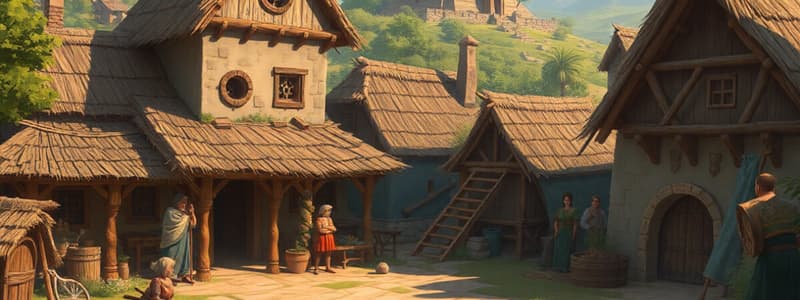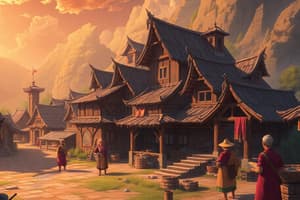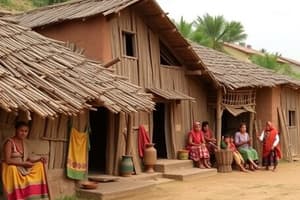Podcast
Questions and Answers
What led to the development of early communities and villages?
What led to the development of early communities and villages?
- The invention of the wheel
- Increased trade due to extra food and supplies (correct)
- The development of agriculture
- The discovery of fire
Individuals with specialized skills, such as artisans, were often considered part of a lower social class.
Individuals with specialized skills, such as artisans, were often considered part of a lower social class.
False (B)
What was the main reason for the development of laws in early villages?
What was the main reason for the development of laws in early villages?
To maintain order and settle disputes
The highest social class in early villages was typically comprised of ______.
The highest social class in early villages was typically comprised of ______.
Match the following social classes with their associated characteristics.
Match the following social classes with their associated characteristics.
Flashcards
Early Villages
Early Villages
Small communities that emerged with extra food and trade.
Artisans
Artisans
Individuals skilled in specific crafts like pottery and carpentry.
Social Classes
Social Classes
Hierarchy that developed based on skill specialization.
Specialized Skills
Specialized Skills
Signup and view all the flashcards
Village Governance
Village Governance
Signup and view all the flashcards
Holy People
Holy People
Signup and view all the flashcards
Study Notes
Simple Villages to Complex Villages
- Extra food and supplies increased trade, marking the beginning of communities and villages.
- Early villages were simple due to small populations and limited specialized work.
- Finding specific goods was difficult in early villages.
- As populations grew, specialization increased, leading to artisans like potters, weavers, carpenters, and toolmakers.
- Anyone trained in a skill was considered an artisan.
Social Classes
- Social classes emerged as people were respected if they were artisans.
- A social class is a group of people with similar skills, backgrounds, income and customs.
- Artisans/craftsmen (potters, cloth-makers) were in the same class.
- Untrained people were in a lower class and treated less well.
- The top class, holy people, were highly respected.
Village Growth and Leadership
- Growing villages needed leaders to maintain order and settle disputes.
- Leaders implemented laws to create safer and more stable communities.
- This early form of leadership was the first form of government.
Studying That Suits You
Use AI to generate personalized quizzes and flashcards to suit your learning preferences.




